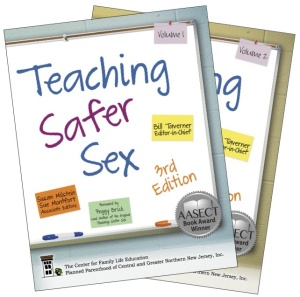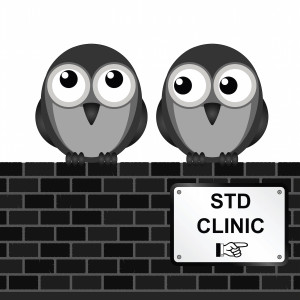 Yep, that is the approach that most people take. Safer sex adds teeny tiny additional points to talk about and consider to a sexual connection. We have come, in the US, to see sex as something that we deserve to have hassle- and worry-free. I’m sure that it’s all the media stories – movies, music, TV, even advertisements! – show relationships and sex as something that doesn’t need to involve hard conversations about STIs and unplanned pregnancy. To say nothing of actually taking yourself to a doctor or a store to spend money on contraception and barriers.
Yep, that is the approach that most people take. Safer sex adds teeny tiny additional points to talk about and consider to a sexual connection. We have come, in the US, to see sex as something that we deserve to have hassle- and worry-free. I’m sure that it’s all the media stories – movies, music, TV, even advertisements! – show relationships and sex as something that doesn’t need to involve hard conversations about STIs and unplanned pregnancy. To say nothing of actually taking yourself to a doctor or a store to spend money on contraception and barriers.
This lesson from Teaching Safer Sex tries to break down some of those barriers.
SAFER SEX:
The Basics
Objectives
By the end of this lesson, participants will be able to:
- Identify three values, attitudes and assumptions people might hold regarding safer sex decisions.
- Describe three key facts regarding sexual safety.
- Assess their own risk for sexually transmitted infections (STIs).
Rationale
Negative attitudes about sexuality, inaccurate information about sexual safety, and denial of one’s own risk can all contribute to individuals’ failure to protect themselves from contracting an STI. Given the prevalence, seriousness and frequent lack of symptoms of many STIs, it is critical that individuals have the opportunity to develop awareness of all three of these aspects of sexual safety and consider the impact of their behaviors on their future sexual health.
My favorite two things about this lesson plan are the Safer Sex Mixer and the Check Yourself Out: Are You at Risk for an STI? activities.
The first one goes like this: Find people to sign that they agree with a list of statements like “Thinks it is great for a woman to buy and carry condoms” and “Can name three ways condoms improve sexual intercourse.” Whether or not people sign these statements, or even believe them, to acknowledge that there are people who would sign them is fantastic.
The second activity is a confidential self assessment and asks participants to check next to 13 statements. Based on the results, the assessment provides information about whether the person is at risk for acquiring an STI.
These are both great activities to keep on hand in the event of a sex ed emergency where you have to teach on short notice!






